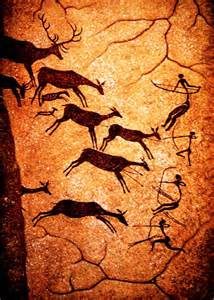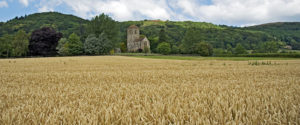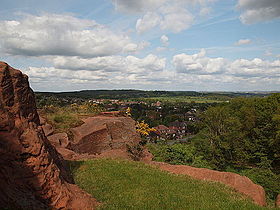Most of us have visited deep caves at some time in our lives. Whether it be the childhood visit to Cheddar Gorge and Wooky Hole or a cultural expedition to Lascaux or Altamira, we have stood in the darkness beneath the earth.
As I have said before, I grew up, for the most part, in the English countryside and I played in the sandstone caves which were part of the escarpment upon which my parents’ house stood (and still stands, though much of what surrounds it is no longer countryside). ‘The caves’ were, like ‘the lake’, (an overgrown farm pond called Buck Pool ) and ‘the bank’, a steep, grassed hillside, down which we would slide on pieces of cardboard or wood depending on the season, all places of enchantment.
There were hills too. The ‘houses’ at my school were ‘Wenlock’, ‘Malvern’, ‘Bredon’ and ‘Clee’, the names of local ranges of hills (I belonged to  Wenlock, undoubtedly the Gryffindor of its day). Though it was the Malverns, with their ancient geology, famous mineral water and musical and literary heritage and the Clees, supposedly with no higher point east until the Urals (the pub in Cleehill village was called The Kremlin Inn), which were closest to where I lived.
Wenlock, undoubtedly the Gryffindor of its day). Though it was the Malverns, with their ancient geology, famous mineral water and musical and literary heritage and the Clees, supposedly with no higher point east until the Urals (the pub in Cleehill village was called The Kremlin Inn), which were closest to where I lived.
I remember Sunday morning visits to Kinver Edge, an outlier of that same sandstone escarpment as beneath my parents’ house, above the nearby, ancient village of Kinver, with its Iron Age hill-forts and fascinating cave system. Especially fascinating for us children because, up until the 1960s, people had lived in the caves. This semi-trogolodytic existence was much envied.
same sandstone escarpment as beneath my parents’ house, above the nearby, ancient village of Kinver, with its Iron Age hill-forts and fascinating cave system. Especially fascinating for us children because, up until the 1960s, people had lived in the caves. This semi-trogolodytic existence was much envied.
There was much playing ‘pretend’ and climbing between and through ‘rooms’, which would no  doubt be thought dangerous today, but which we, at the time, thought normal. Our parents insisted that we be careful, but there seemed to be more anxiety, probably sensibly, around roads and railways than trees, hills and caves. The caves were largely surface caves anyway, in sandstone there are rarely the sinkholes and water carved caverns of limestone or chalk.
doubt be thought dangerous today, but which we, at the time, thought normal. Our parents insisted that we be careful, but there seemed to be more anxiety, probably sensibly, around roads and railways than trees, hills and caves. The caves were largely surface caves anyway, in sandstone there are rarely the sinkholes and water carved caverns of limestone or chalk.
Southern Spain’s Subbeatic mountain system is karstic, however, mainly limestone. The Sierra Grazalema range in particular is riddled with caves, sinkholes and underground rock formations, some of them huge ( see The High Sierras ). My characters in the sequel to ‘Reconquista‘ are working their way through a cave system at the moment, made all the more dangerous by the storms and the rain which falls in February, the month in which this adventure is set in 1265. They do not have helmets, battery operated lights, crampons and other modern pot-holing equipment, merely a few ropes and lanterns. In addition, they have to deal with pursuit by the villains (of course).
The real Sierra de Grazalema in January 2017, meanwhile, is under snow (see Mountain Winter). When that snow melts, the conditions there will be the same as those encountered by my characters, struggling through (except for higher temperatures, reflecting global warming ). It’s a pity I can’t go there now, my next visit is not until the end of the month. Nonetheless I should be able to gather everyone else’s stories, which will feed then into mine.
If you enjoyed reading this article you may also enjoy Cadiz in the Rain Landscape Weatherland


 RSS – Posts
RSS – Posts